Does Your Practice Management Software Avoids These Common Medical Billing Errors?
Does Your Practice Management Software Avoids These Common Medical Billing Errors?
November 10, 2020
Effective revenue cycle management is the foundation of every medical practice. But what is the impact of medical billing errors on a healthcare practice? As healthcare providers, you are aware of the high cost of care and the competitive market. High medical claim denial rates can affect the bottom-line and reduce your revenues significantly.
Whether your practice is big or small, you can’t be casual about medical billing errors that could easily be prevented. Yet, small and independent practices have more to lose when it comes to billing errors.
A 2014 Advisory Board study reveals that 90 percent of claim denials are preventable. Practices need to build a prevention-focused claims management approach, use automated processes, use data to analyze claim denial reasons, and improve their front-end revenue cycle management process.
Fortunately, if you are cautious, you can avoid these common medical billing errors easily. In this article, we run through the most common billing errors and how you can avoid them.
1. Patient’s Eligibility Verification and Benefit Verification (EV and BV)
The Error:
Coverage availability is one of the most common areas where practices tend to slip up. A recent Healthcare Information and Management Systems Society (HIMSS) survey shows that 76% of healthcare leaders find denials to be their biggest challenge. Healthcare practices can be more effective in reducing denials by using analytics to determine the leading causes of denials.
The study found that a breakdown in the front-end processes causes some of the most common denials. For instance, patient registration and eligibility errors alone account for 23.9%.
One of the easiest ways to avoid denials is being accurate with crucial information when it comes to EV and BV.
Many practices that depend on in-house resources for Eligibility and Benefit Verifications miss out on key information because they focus on moving the transactions. They lack the software and the know-how to audit real-time eligibility information based on individual player rules and denial patterns. And by the time you realize this, and the claim is denied, it is too late.
The Solution:
You need a system that provides automated eligibility verification and benefits mapping to take the guesswork out of the process. Technologies such as ours can reduce your eligibility denials by 50% by offering eligibility verification in real-time and alert you on coverage, coordination of benefits, policy termination, the correctness of demographics, co-pays, and deductible. A good technology platform will provide not only real-time checks but scheduled eligibility rechecks, batch eligibility checks and verify co-pay, co-insurance, and deductible information.
There are many benefits of a streamlined verification process.
- Fewer Denials & Rejected claims
- Reduce the need for tedious in-house manual verification
- Full Use of Your Relevant 271 Eligibility Data
- Higher speed of Registration while you free-up resources for other tasks
- Minimize your bad debt
- Improve and speed up your recovery cycle
2. Avoid Duplicate Claims
The error and its impact:
Duplicate billing or double-billing is when claims are resubmitted for a single encounter for the same date by the same practice. These are among the top reasons for Medicare Part B claim denials (up to 32%).
The actual cost of duplicate billing goes beyond the revenue. There is a delay or loss in payment, reputation loss, and the possibility of fraud investigation.
Wonder why duplicate claims submission is so rampant across the industry? It is because most practitioners use a reactive medical billing process. According to Health Payer Intelligence, 46% of medical fraud cases in 2016 were due to either fraudulent provider billing or double-billing, costing a whopping $29 million in fines.
An intuitive technology revenue cycle software can alert you and help reduce manual errors and outdated information and keep your data clean, so there are no duplicate or double-billing chances.
3. Incorrect and/or Mismatched Codes (ICD-CPT Mismatch and Incorrect ICD Codes)
The Error:
Often an in-house staff will enter mismatched treatment and diagnosis codes. Usually, this happens when the biller upcodes the diagnosis without updating the treatment code. Insurance companies typically reject such claims, or sometimes the claim is inflated due to upcoding.
Another possibility is that the insurance company will reject the claim due to a lack of medical necessity. Problems occur because the biller and coder must have a thorough knowledge of ICD-10-CM codes and CPT codes for the procedure.
For example, using the code for a bunion procedure when the only diagnosis is asthma.
The Solution:
Physicians need to provide coders with the necessary information about the patient’s diagnosis. It requires comprehensive documentation and detailed patient records with all possible information, including accompanying conditions for better application of codes.
Invest in ongoing training and education programs and informal coaching to ensure that employees know the latest coding requirements.
Luckily, advanced billing software can help you avoid these errors by automatically suggesting the right ICD codes based on common diagnosis and keywords entered.
Choose technology wisely and invest in a system that codes to the highest specificity levels, ensuring that your claim is not denied.
4. Data Entry Errors
The Error:
To err is human. Data entry errors are more common than one can imagine. Incorrect information in your claim will lead to claim denial. From the practice address, the phone number to the patient’s name, gender, birthday, and insurance details to the insurance company’s address and policy number, there are many places where billers goof up.
Manual data entry errors contribute the largest percentage from 23.9% claims denied due to eligibility errors and registration issues and other 12.4% owing to incomplete or missing authorizations.
The Solution:
Software scrubbing can eliminate such manual and basic coding errors quite easily. For instance, if a wrong zip code is entered or an incorrect format for member ID is entered, the software will immediately prompt the relevant error messages.
5. Missing Pre-authorization and Referral
The Error:
While billers work hard to reduce claim denials, payers have, over the years, increased the number of visit types and procedures that need prior authorization or pre-authorization. It has led to a rising number of denials in most procedure-based practices.
The MGMA’s recent stat poll reveals prior authorization errors to be the leading cause for denials when respondents were asked, “What is the root cause of claims denials/pends?” About 31 percent answered “pre-authorization.”
A December 2017 study from the American Medical Association states that 86 percent of physicians have reported that prior authorizations have increased in the previous five years, whereas 51 percent report they have increased significantly.
The Solution
You need to be ahead of the game and use medical billing software that can help you set alerts on plans mandatorily requiring pre-authorization and referral numbers, missing, which leads to denial and loss of significant revenue for higher value procedures.
6. Handle Payer Mistakes
The Error:
If you are confident that your process was foolproof, but your claim has still been rejected.
Sometimes, it is the insurance company that makes a mistake. If you have reviewed your claim’s accuracy, then it is likely that the payer made a mistake.
And going by recent reports, the overall rates of inaccurate claims payments have been increasing. As per AMA, claims processing errors by insurance companies cost practitioners billions of dollars. Not to mention the frustration and avoidable delays. AMA’s latest findings show that commercial health insurers have an average claims processing error rate of 19.3 percent. This overall inaccuracy amounts to $1.5 billion in unnecessary administrative costs to the healthcare ecosystem. AMA estimates also show that eliminating payer mistakes could potentially save $17 billion.
The Solution:
An excellent way to find out if there has been a mistake on your claim from the payer’s side is to review the denial statistics. As a best practice, all physician’s offices must keep track of monthly denial reports to reveal patterns.
A medical billing reporting tool can help you speed up things by providing the requisite data and reports that make it easier to spot issues. You can easily confirm whether the claim was denied owing to a payer error using these reports.
7. Under-coding
The Error:
Under coding means billing for a less expensive service than the actual treatment performed or missing out on billing the codes all together. This error affects your practice’s bottom line but may also have legal repercussions from the audit perspective. In 2016 alone, the Medicare fee-for-service improper payment rate was an estimated 11 percent or nearly $40.4 billion.
The Solution:
Double-check patient information before filing the claim and ensure safety nets and peer reviews for maintaining accuracy. Always review the superbill and chart to make sure each procedure has been accounted.
Fortunately, with an audit form with medical billing software, you don’t have to worry about under coding or the potential risk of fraud implications.
8. Upcoding
The Error:
Upcoding or over-coding is when a practice bills the patients for services they haven’t received or services that were more expensive than what they were treated. It may happen for two reasons: accident or when the diagnosis and treatment codes are mismatched.
Unfortunately, some providers also do this to inflate the total amount a patient owes. It is considered fraudulent, and practitioners must be wary of upcoding, whether by accident or design.
A psychiatrist was fined $400,000 and permanently excluded from participating in Medicare and Medicaid in part due to upcoding.
The Solution:
Stay updated on billing and coding trends. Update your procedures and invest in your employees’ training and education. Be sure your billing team understands the latest updates in medical billing codes, modifications in healthcare regulations, new illnesses, or new treatments for diseases.
Medical billing software with inbuilt audit forms can also help you mitigate these errors as the software updates take care of the latest codes and regulations.
9. Unbundling and Bundling Errors
The Error:
Unbundling is the process of billing for individual services that are covered under a less expensive packaged treatment plan. It means that the charges that should be grouped under one code are listed separately, leading to an inflated package rate. Unbundling happens due to negligence or improper billing standards.
However, unbundling is more common than we can imagine. Unbundling was identified as one of the most common medical billing errors by the AMA in 2018.
The Solution:
Practitioners can avoid unbundling errors by making sure tricky scenarios where coders can easily slip up. Investing in the right technology solutions to create payer-wise charge templates can help you avoid this error.
Key Takeaways for Operational Efficiency and Revenue Discovery & Recovery
Medical billing errors are shockingly common, and both practitioners and patients end up paying a heavy price for these mistakes. These errors are hurting healthcare as a whole, and the damage often goes beyond monetary loss by compromising the facility’s reputation or practice.
Here are some ways in which healthcare practitioners can be more cautious and proactive when it comes to claims denials:
- Verify eligibility checks in advance to avoid costly denials
- Collect prior authorization and referrals as necessary before the encounter
- Recheck for manual errors and patient information details
- Eliminate duplicate claims or double billing that can impact your revenue and reputation.
- Code accurately, not under or up-code to avoid audits and optimize reimbursements
- Train your team on common patterns of denial to improve collections
A state-of-art revenue cycle software and caring medical billing service can easily help you prevent these ‘avoidable errors.’ Invest in the modern-day right technology and the right resources to spot these mistakes and improve your operational efficiency and revenue.






